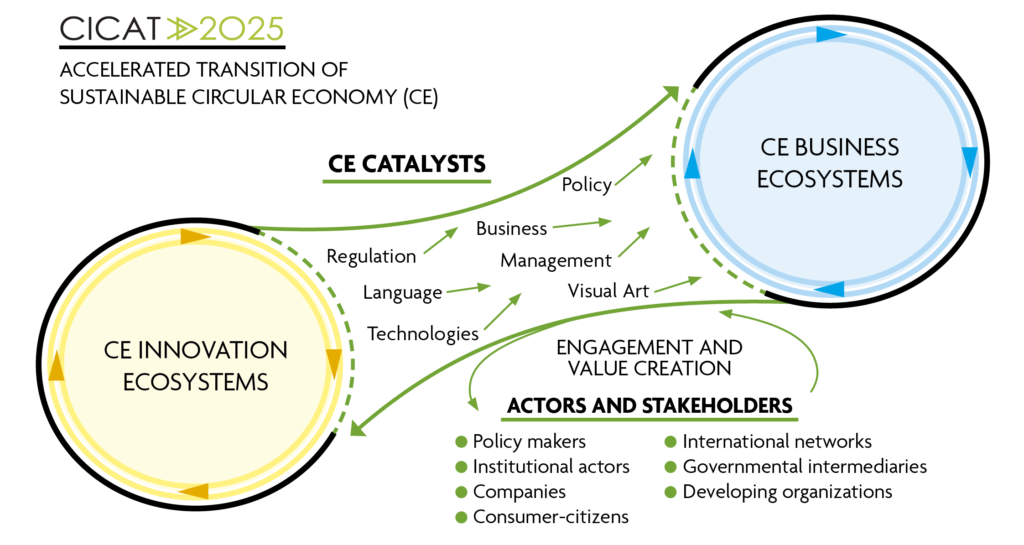What is CICAT2025?
The joint project of Finnish Universities, Circular Economy Catalysts: From Innovation to Business Ecosystems (CICAT2025) aims to facilitate the transition from linear to circular economy. The project supports Finland’s strategic goal to become a global leader in the circular economy by 2025. The project will work to identify measures hampering and supporting the circular economy and search solutions for companies and Regulators to support the transition to a circular economy.
CICAT2025 explores a wide range of circular economy catalysts that have the potential to Accelerate the adoption of circular economy principles in society and markets. Decision-makers, policy-makers and companies can then apply those catalysts in an effective manner.
The consortium consists of Tampere University, University of Turku, University of Jyväskylä, University of Eastern Finland, Tampere University of Applied Sciences and Turku University of Applied Sciences. The extensive and multidisciplinary consortium brings together expertise in technology, business, policy-making, the arts, linguistics, legislation and stakeholder relations. TUAS is responsible for the project’s interaction work.

In the core of the project is close cooperation and discussion with universities, companies, authorities and communities. In addition, many ministries, municipalities and other organizations as well as a strong international cooperation network are involved in the project.
Project Sections
Main Concepts
What do we mean by sustainable circular economy?
Sustainable circular economy (CE) means reducing the use of natural resources, closing material, energy and nutrition cycles, and retaining the value of products, materials and resources as long as possible. Sustainable CE is implemented in the actions of companies, cities, other organizations and citizens and the promotion of sustainable CE requires comprehensive collaboration across different societal levels.
When promoting sustainable CE, economic, social and ecological consequences for different stakeholders should be evaluated and considered currently and across generations, while staying within global environmental limits in the long term.
What do we mean by ecosystems?
The circular economy ecosystem is a multi-actor networked entity in which interacting actors play complementary roles. The actors in the circular economy ecosystem can be companies, cities, ministries, universities, non-profit organizations and citizen-consumers. A single actor can belong to multiple ecosystems, intentionally or unintentionally. The ecosystem emerges or is created around a common goal. In a circular economy, the goal can be to enable resource recycling or reuse, develop circular economy knowledge, or execute a circular economy business. Circular economy ecosystems are characterized by features of many ecosystem types, such as innovation, business or platform ecosystems.
What do we mean by catalysts?
A catalyst is a positive driving force that accelerates the transition to sustainable circular economy. Research on catalysts helps to understand how a complex systemic transition takes place in interaction between a variety of factors. Catalysts have a real impact on CE activities and on interaction with each other, and they create feedback loops in the system. Catalysts create and maintain favorable conditions for change towards CE. Groups of catalysts create change arenas where the transition can be accelerated.





